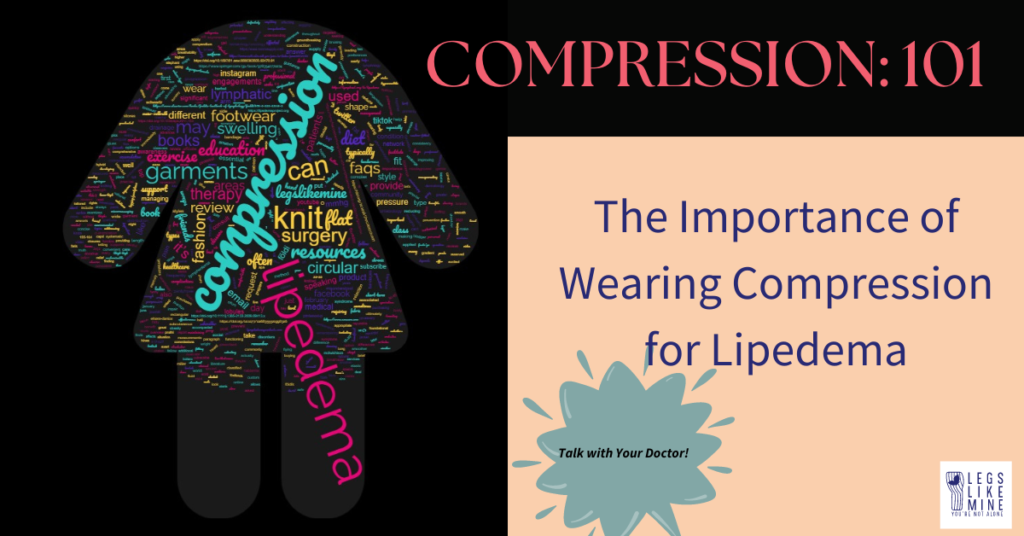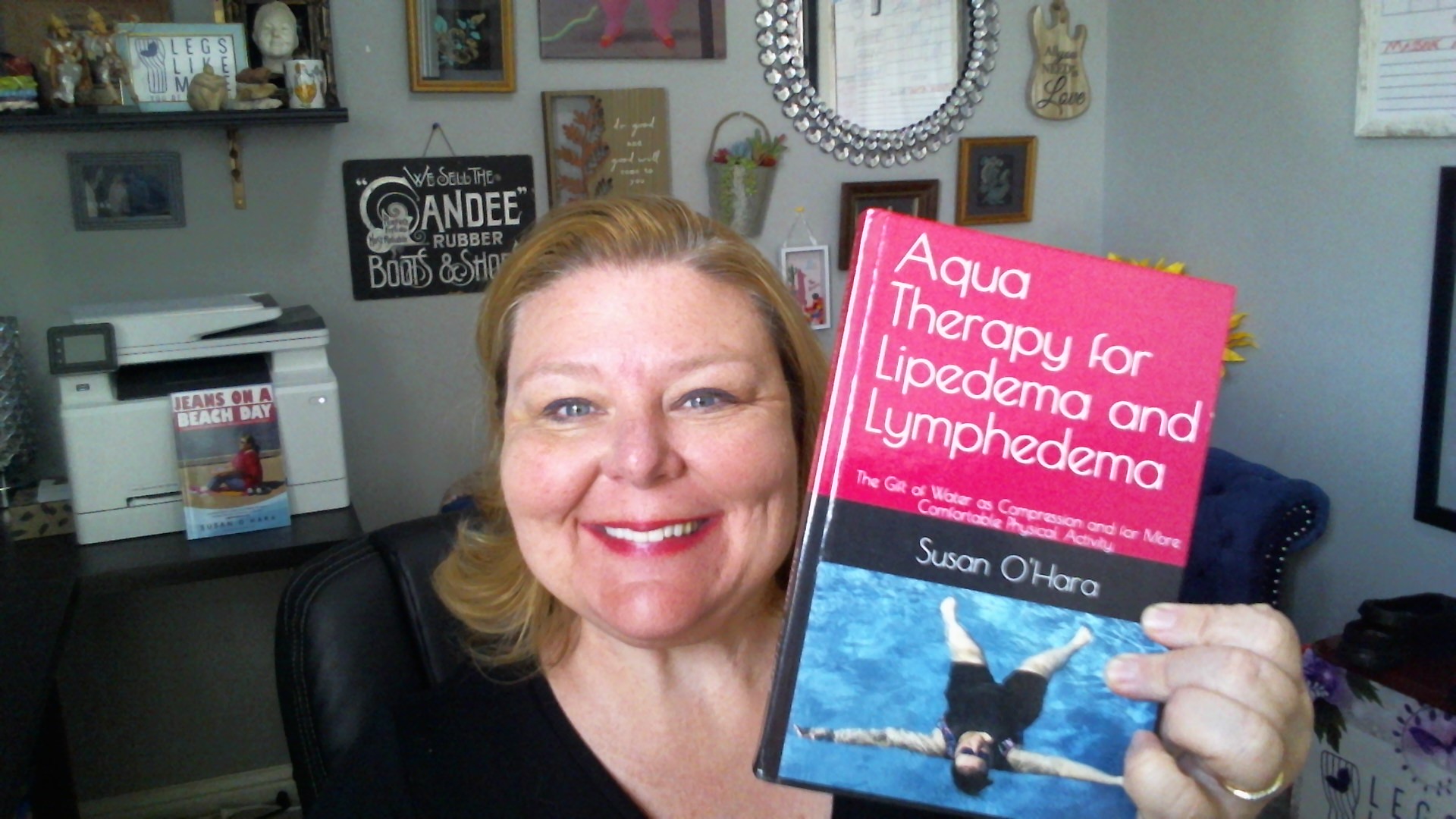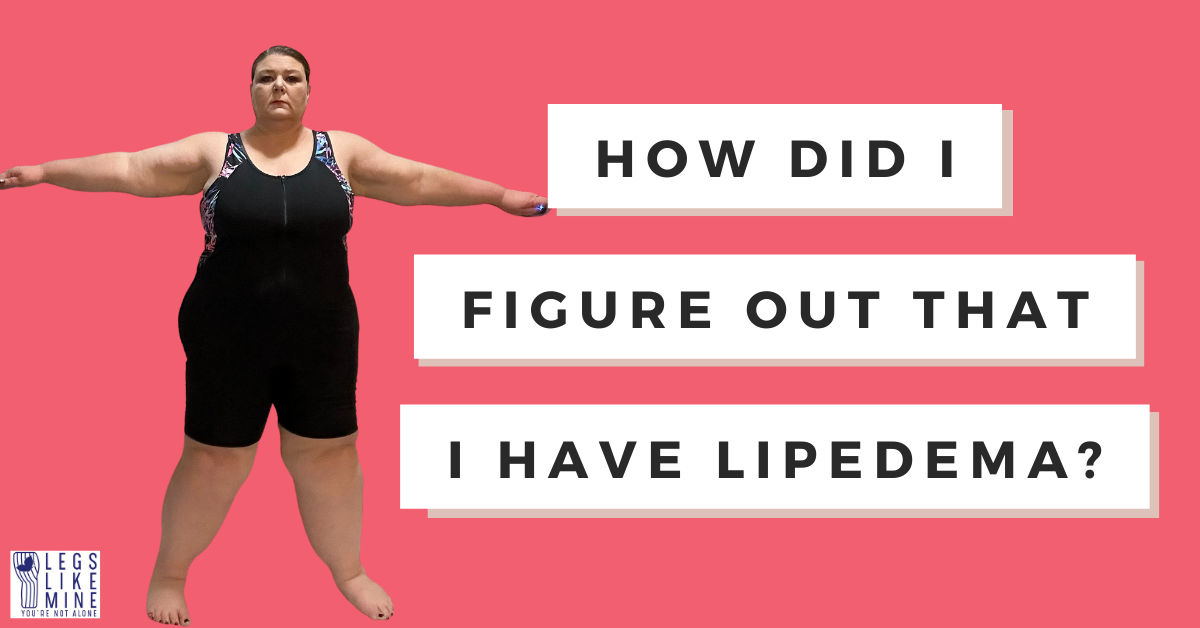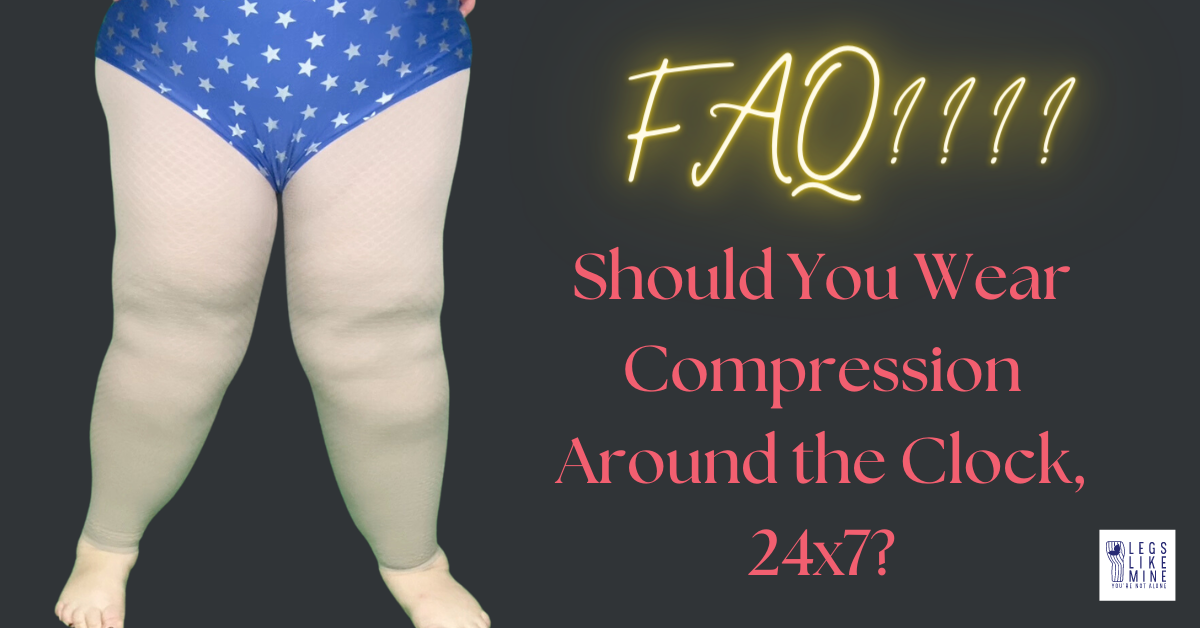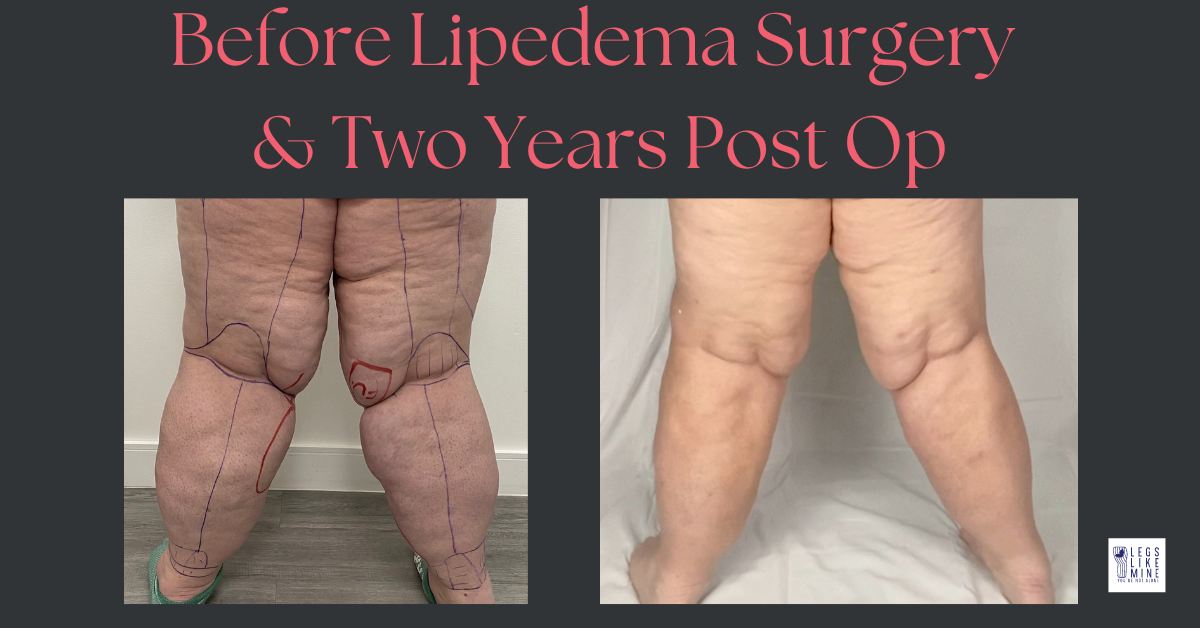Hi friends!
As someone who has been living with lipedema for years and advocating for better awareness and understanding of this condition, I can’t stress enough the importance of wearing compression garments. Compression therapy is a crucial part of managing lipedema and can provide significant relief from the painful symptoms associated with this chronic condition.
What is Lipedema?
Before we dive into compression therapy, let’s quickly review what lipedema is. Lipedema is a chronic, progressive condition that primarily affects women and is characterized by the abnormal accumulation of subcutaneous fat in the arms, legs, and sometimes the trunk area. This disproportionate fat distribution is often accompanied by pain, tenderness, and easy bruising in the affected areas.
Why is Compression Important for Lipedema?
Compression garments are essential for managing lipedema because they help:
- Reduce Pain and Swelling: The gentle pressure applied by compression garments can alleviate the pain, tenderness, and swelling associated with lipedema.
- Improve Lymphatic Drainage: Lipedema can impair the proper functioning of the lymphatic system, leading to fluid accumulation and swelling. Compression garments facilitate lymphatic drainage, reducing the risk of complications.
- Prevent Progression: By improving lymphatic function and reducing swelling, compression therapy can help slow the progression of lipedema and prevent further complications.
Consult Your Doctor
It’s important to note that while compression therapy is generally safe and effective for lipedema management, there may be certain contraindications or precautions to consider. Before starting compression therapy, it’s crucial to consult with your healthcare provider, especially if you have any underlying medical conditions or concerns. Your doctor can evaluate your individual situation and provide guidance on the appropriate type and level of compression, as well as any potential risks or limitations.
Types of Compression Garments
There are various types of compression garments available, each with different levels of compression and intended uses:
- Compression Stockings: These are the most common type of compression garment for lipedema, available in different compression classes (more on that later) and styles, including thigh-high, knee-high, and pantyhose. I personally have a lovely selection of socks that go knee high, and pantyhose. Many ladies report that thigh highs roll down due to the size of our thighs – I’m definitely in this group. Of course there are glues you can get, but it’d take a lot of glue to keep anything on my thigh, personally.
- Compression Arm Sleeves: For those with lipedema affecting the arms, compression arm sleeves can provide similar benefits. These also come in different style from more of a glove fit that stops at the top of the arm, to a bolero jacket style that may fasten at the bra line, or just slip over the shoulder.
- Compression Bandages: These are typically used for short-term compression or in conjunction with other compression garments. Even these have different styles, some are more like a short stretch ace bandage (NOT an ace bandage), or my favorite, are the FastN’Go bandages that you can get from Rivera Hybrid Solutions (not a paid affiliate).
- Compression Wraps, are elastic or fabric (often neoprine) wraps that can be adjusted using Velcro-type closures to apply graduated compression to the affected area. These wraps are often used for short-term compression or in conjunction with other compression garments, providing customizable pressure levels to facilitate lymphatic drainage and reduce swelling. For me, I will take a wrap and put it on over compression pants for long car rides or flying. Some people might use them in areas where they’re developing lobules, on top of compression as well.

I often wear a flat knit legging style compression with micromassaging. In the summer I opt for capri length, but I also own over the heel length. So many options!
Compression Classes
Compression garments are classified based on the level of pressure they exert, measured in millimeters of mercury (mmHg). The higher the compression class, the greater the pressure applied. Common compression classes for lipedema include:
- Class 1 (15-20 mmHg): Mild compression, often used for prevention or early stages of lipedema.
- Class 2 (20-30 mmHg): Moderate compression, commonly recommended for lipedema management.
- Class 3 (30-40 mmHg): Firm compression, typically used for more severe cases or when additional support is needed.
Compression Fabrics: Flat Knit vs. Circular Knit
When it comes to compression garments, the type of knitting technique used can make a significant difference in terms of fit, comfort, and effectiveness for different patients. Here’s a brief overview of the differences between flat knit and circular knit compression:
Flat knit compression garments are knitted in a flat, rectangular shape and then sewn together to form the desired shape. This construction method allows for a more customized fit, especially in areas with irregular contours or lobules. Flat knit garments can better accommodate asymmetries and provide targeted compression in specific areas, making them a suitable choice for patients with more complex lipedema presentations or those requiring a precise fit. (I typically wear flat knit on day to day in my legging/pantyhose style, but I do own circular knit for when I need more support or prefer a smoother look. I also have circular knit knee socks that I sometimes wear as a second layer).
On the other hand, circular knit compression garments are seamlessly knitted in a tubular shape, creating a smooth, continuous fabric without seams. This construction method offers a consistent compression gradient throughout the garment, which can be beneficial for patients with more uniform swelling or those seeking a seamless, comfortable option. Circular knit garments are often preferred for their ease of donning and doffing, as well as their breathability and overall comfort.
Ultimately, the choice between flat knit and circular knit compression garments depends on the individual patient’s needs, body shape, and personal preferences. Some patients may benefit from a combination of both types, with flat knit garments used in areas requiring more customization and circular knit garments used in areas with more uniform swelling.

These are some fun compression socks that go to the knee.
Buying Compression Garments
When it comes to purchasing compression garments, it’s essential to find a reputable source and ensure proper fit. Here are some tips:
- Online Retailers: Websites like Amazon (https://www.amazon.com) offer a wide selection of compression garments from various brands, making it convenient to compare options and read reviews. Another site I use is lymphedemaproducts.com.
- Medical Supply Stores: Local medical supply stores like Norco (https://www.norcosupply.com) can provide professional fitting services and guidance on selecting the right compression garments.
- Custom Compression: For more complex cases, such as those with significant lobules or irregularities, custom-fitted compression garments may be necessary. These are typically prescribed by a healthcare professional and made to precise measurements.
Remember, “the best compression is the compression you’ll actually wear daily.” Consistency is key, so choose garments that are comfortable, breathable, and easy to put on and take off.
Research and Resources
Here is the list with a paragraph mark between each item, maintaining the APA format and live URLs:
Birkbauer, M., & Oberhuber, G. (2021). Compression therapy for lipedema: A systematic review. Phlebology, 36(9), 629-639. https://doi.org/10.1177/0268355521998326
Fife, C. E., Maus, E. A., & Carter, M. J. (2010). Lipedema: A Frequently Misdiagnosed and Misunderstood Fatty Deposition Syndrome. Advances in Skin & Wound Care, 23(2), 81-92. https://doi.org/10.1097/01.ASW.0000363503.92470.91
Földi, E., & Földi, M. (2006). Lipedema. In E. Földi & M. Földi (Eds.), Földi’s textbook of lymphology (pp. 417-427). Elsevier. https://www.elsevier.com/books/foeldis-textbook-of-lymphology/foeldi/978-0-323-03116-3
Herbst, K. L. (2012). Rare adipose disorders (RADs) masquerading as obesity. Acta Pharmacologica Sinica, 33(2), 155-172. https://doi.org/10.1038/aps.2011.153
Herbst, K. L., Kahn, L. A., Iker, E., Ehrlich, C., Wright, T., McHutchison, L., Schwartz, J., Sleigh, M., Donahue, P. M. C., Lisson, K. H., Faris, T., Miller, J., Lontok, E., Schwartz, M. S., Dean, S. M., & Bartholomew, J. R. (2021). Standard of care for lipedema in the United States. Phlebology, 36(9), 645–662. https://www.ncbi.nlm.nih.gov/pmc/articles/PMC8652358/
Langendoen, S. I., Habbema, L., Nijsten, T. E., & Neumann, H. A. (2009). Lipoedema: From clinical presentation to therapy. A review of the literature. British Journal of Dermatology, 161(5), 980-986. https://doi.org/10.1111/j.1365-2133.2009.09413.x
Lipedema Project (2023). Lipedema Information and Resources. https://lipedemaproject.org/
Lymphatic Education & Research Network (LE&RN) (2023). Lipedema. https://lymphaticnetwork.org/living-with-lymphedema/related-conditions/lipedema
National Lymphedema Network (NLN) (2023). Lipedema. https://lymphnet.org/le/lipedema
Schmeller, W., & Meier-Vollrath, I. (2007). Lipedema. In W. Schmeller & M. Meier-Vollrath (Eds.), Lymphedema: A concise compendium of theory and practice (pp. 155-164). Springer. https://www.springer.com/gp/book/9783540772274
Wold, L. E., Hines, E. A., & Pruthi, S. (2020). Lipedema: A Misunderstood Fat Distribution Disorder. Hematology/Oncology Clinics of North America, 34(3), 599-608. https://doi.org/10.1016/j.hoc.2020.01.007
Remember, while compression therapy is essential for managing lipedema, it’s always best to consult with a healthcare professional who specializes in lymphatic disorders to develop a comprehensive treatment plan tailored to your specific needs.
I hope this helps just one more person. Have a great day, friends!
Susan
Contains paid ads. As an Amazon affiliate, I earn commissions on your purchases.
